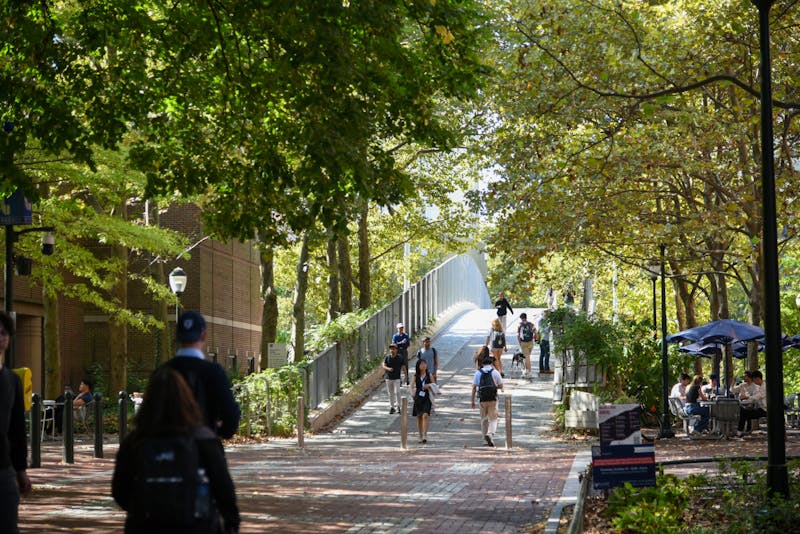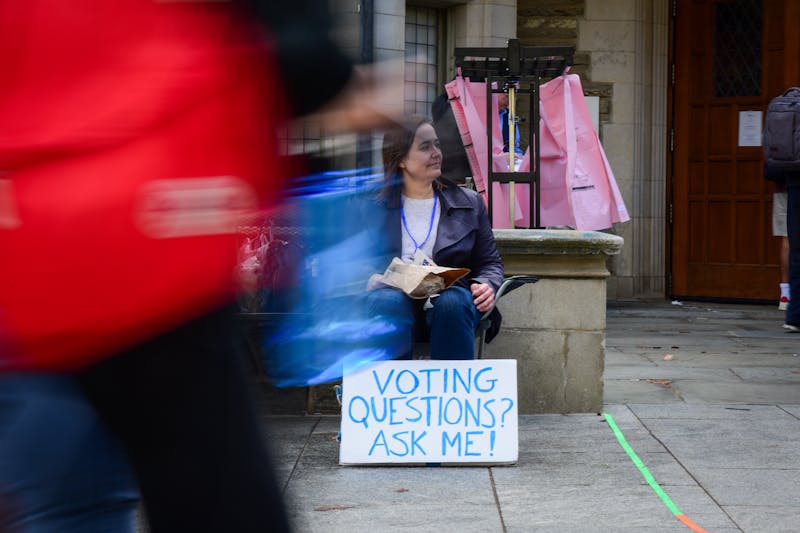The University City Science Center’s Breadboard and the Philadelphia Redevelopment Authority’s Percent for Art are joining forces to create a public art residency program.
Their joint program — Art Along the Avenue of Technology — aims to transform the five-block stretch of Market Street between 34th and 39th streets through semi-permanent artwork that will be used to engage the community groups in the Greater Philadelphia region.
Breadboard, the University City Science Center’s arts and technology program, introduces the community to “creative and cultural practices emerging around new media” through three different approaches— the Esther Klein Gallery, which is a public exhibition and project space, the Artist in Residency Program as well as youth and community outreach programs, according to its website.
“This is a groundbreaking program. Up to this point, they’ve really just focused on static sculptures and more conventional art,” Breadboard Director Dan Schimmel said. “But this is actually funding a program that will — through the programming — be engaging the public.”
“The idea is really to bring people to the Science Center campus and start to develop that stretch of Market Street, start engaging pedestrians more and getting that to be more of a place where people want to hang out,” Schimmel added.
According to Breadboard’s website, the program will “explore contemporary themes of public space, place-making and technology in an urban environment.” Possible additional programming includes smaller videos made by an artist and the local community, an outdoor screening series and tweeting and broadcast messages.
City planning professor Eugenie Birch said she is very excited about the possibilities of this program.
“As a city planner, I’m interested in the quality of life of places — in particular how livable they are — and many things fall under that idea of livability,” she said. “If you’re in a city … you can’t say hello to everybody on the street … but what interactive public art will do is break down some of those barriers. And so you create an informal, spontaneous community in a place that’s anonymous.”
Schimmel explained that Breadboard has had a long-standing partnership with NextFab Studio, a high-tech workshop and prototyping center.
“We thought it would be great to take some of the One Percent for Art funding and channel that to a project that involved bringing in an artist resident who would have a full residency at NextFab studio and be able to create something that would take place on the Science Center campus,” he said. “Along with that, we would be able to integrate all of our other programs into and around that residency.”
The program is currently in the process of selecting an artist. Selection criteria for this project focuses on innovative use of new media and technology, past projects and outreach experience. This stage should be completed by July. “We’re hoping to have the artist start in the fall,” Schimmel said.
Jeanne Mell, vice president for marketing and communications at the Science Center — which was founded in 1963 as the first urban research park in the United States — oversees the Breadboard program. “Anything we could do to explore, encourage, and develop those future innovations … the better off our entire region is going to be in terms of being recognized as an innovation hub,” she said. “We are fully committed to [the program’s] full success.”
This program is part of a long tradition of innovation in Philadelphia, which was the first city in the United States to implement programs for obtaining and commissioning contemporary public artwork in urban renewal areas. The Redevelopment Authority’s Percent for Art Program began in 1959 and was the first U.S. program to emphasize fine arts in the urban renewal process.
The Daily Pennsylvanian is an independent, student-run newspaper. Please consider making a donation to support the coverage that shapes the University. Your generosity ensures a future of strong journalism at Penn.
DonatePlease note All comments are eligible for publication in The Daily Pennsylvanian.







